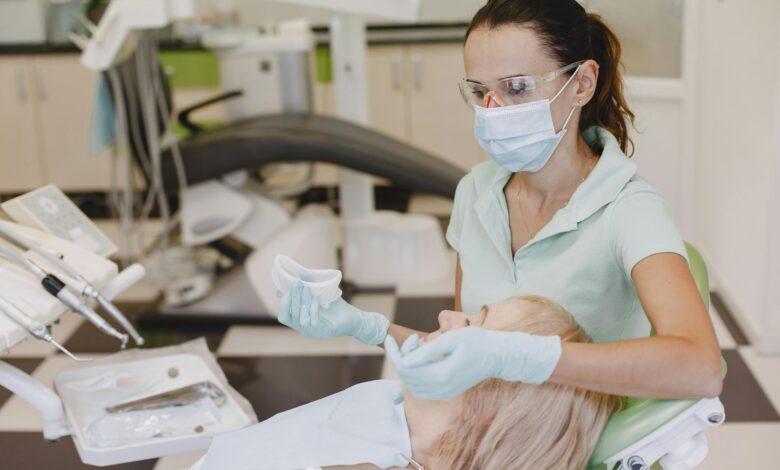What Is Covered by Health Insurance in Ontario?

Ontario’s healthcare system is widely regarded as one of the most comprehensive and accessible systems in Canada. The province operates under a publicly funded model known as OHIP (Ontario Health Insurance Plan) , which ensures that all residents have access to essential medical services without direct charges at the point of care. However, while OHIP covers many healthcare needs, it doesn’t cover everything. Understanding what is—and isn’t—covered by health insurance in Ontario is crucial for residents to make informed decisions about their healthcare and whether additional private insurance is necessary.
In this article, we’ll explore the scope of OHIP coverage, supplemental services not included under the plan, and options for extending your healthcare protection through private insurance.
What Does OHIP Cover?
OHIP provides coverage for medically necessary services delivered by physicians and hospitals. Here’s a detailed breakdown of what’s included:
1. Hospital Services
- Inpatient Care : Treatment received while admitted to a hospital, including surgeries, diagnostic tests, and medications administered during your stay.
- Outpatient Services : Procedures or treatments provided in a hospital setting without requiring an overnight stay, such as X-rays, lab tests, and emergency room visits.
- Emergency Ambulance Services : Transportation to a hospital in life-threatening situations. Note that non-emergency ambulance rides may not be fully covered.
2. Physician Services
- Visits to family doctors, specialists, and other licensed practitioners for diagnosis, treatment, and preventive care.
- Services provided in clinics, hospitals, or home visits if deemed medically necessary.
3. Diagnostic Tests
- Laboratory tests (e.g., blood work) and imaging services (e.g., X-rays, MRIs, CT scans) ordered by a physician.
4. Maternity and Newborn Care
- Prenatal care, delivery (including cesarean sections), and postnatal check-ups for both mother and baby.
- Hospital stays related to childbirth are fully covered.
5. Mental Health Services
- Psychiatric consultations and therapy sessions provided by licensed psychiatrists.
- Inpatient mental health care in hospitals.
6. Prescription Drugs for Seniors and Vulnerable Groups
- While prescription drugs are not universally covered under OHIP, certain groups qualify for assistance:
- Seniors aged 65 and older.
- Individuals receiving social assistance.
- Residents with specific chronic conditions or disabilities.
7. Home Care and Long-Term Care
- Limited home care services, such as nursing support and personal assistance, are available for those recovering from illness or surgery.
- Subsidized long-term care facilities for individuals who require ongoing support due to age or disability.
What Isn’t Covered by OHIP?
While OHIP offers robust coverage for essential services, there are several areas where it falls short. These gaps often necessitate private insurance or out-of-pocket payments. Below are some key exclusions:
1. Prescription Medications
- Most prescription drugs are not covered under OHIP unless you belong to an eligible group (e.g., seniors or low-income individuals). For others, private drug plans or workplace benefits are required.
2. Dental Care
- Routine dental services, such as cleanings, fillings, and extractions, are not covered by OHIP. Exceptions include emergency dental procedures performed in hospitals for low-income patients.
3. Vision Care
- Eye exams, glasses, and contact lenses are generally not covered unless you’re under 19 or over 65 years old. Even then, coverage is limited.
4. Chiropractic, Physiotherapy, and Massage Therapy
- These services are not covered by OHIP but may be partially subsidized for seniors or individuals with specific health conditions.
5. Alternative Therapies
- Treatments like acupuncture, naturopathy, and herbal medicine are not covered unless prescribed within a hospital setting.
6. Cosmetic Procedures
- Elective cosmetic surgeries, such as liposuction or facelifts, are not covered unless they’re deemed medically necessary.
7. Travel Vaccinations
- Immunizations required for international travel are not covered by OHIP.
8. Private Hospital Rooms
- OHIP typically covers shared rooms in public hospitals. If you prefer a private room, you’ll likely need to pay extra unless it’s medically justified.
Supplementing OHIP with Private Insurance
To address the gaps in OHIP coverage, many Ontarians opt for private health insurance plans. These plans can be purchased individually or obtained through employers. Common types of private insurance include:
1. Extended Health Benefits
- Covers prescription medications, dental care, vision care, and paramedical services (e.g., physiotherapy, chiropractic).
- Often includes annual limits per category of service.
2. Dental Insurance
- Provides coverage for routine check-ups, cleanings, fillings, root canals, and orthodontics (with varying levels of reimbursement).
3. Vision Insurance
- Helps offset the cost of eye exams, glasses, contact lenses, and laser eye surgery.
4. Critical Illness Insurance
- Offers a lump-sum payment upon diagnosis of a serious illness, such as cancer or heart disease, providing financial flexibility during recovery.
5. Travel Insurance
- Protects against unexpected medical emergencies while traveling outside Canada, including high-cost treatments abroad.
How to Maximize Your Healthcare Coverage
To ensure you’re making the most of your healthcare benefits in Ontario, consider the following tips:
1. Understand Your Eligibility
- Familiarize yourself with OHIP’s coverage rules and any supplementary programs you might qualify for, such as the Trillium Drug Program (for high prescription costs) or Assistive Devices Program (for mobility aids).
2. Explore Workplace Benefits
- If your employer offers extended health benefits, take advantage of them. Review the policy details to understand what’s included and how to file claims.
3. Supplement with Private Insurance
- Invest in private insurance to bridge the gaps in OHIP coverage, especially for dental, vision, and prescription drugs.
4. Use Community Resources
- Many community organizations and non-profits offer free or low-cost healthcare services, such as dental clinics for children or mental health counseling.
5. Stay Up-to-Date on Policy Changes
- OHIP policies and provincial healthcare initiatives evolve over time. Stay informed about updates that could affect your coverage.



